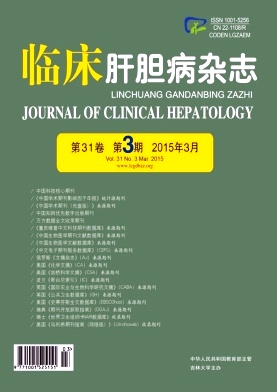Objective To evaluate the distribution of intestinal flora in patients with cirrhosis compared with healthy people and investigate the relationship between the distribution of intestinal flora and Child- Pugh classification of liver function,and to analyze the effect of probiotic treatment on the improvement of intestinal flora and liver biochemical indices in patients with cirrhosis. Methods Twenty- six patients with compensated cirrhosis( without ascites) and 22 with decompensated cirrhosis( with ascites) who were admitted to our hospital from February2014 to July 2014,as well as 21 healthy adult subjects,were randomly selected. Patients with cirrhosis were given probiotic( Bei Feida) treatment in addition to conventional therapy for 14 days. All patients signed informed consent forms. The distribution of intestinal flora,blood ammonia,serum alanine aminotransferase,serum albumin,and serum bilirubin levels were determined. Comparison of continuous data between the two and multiple groups was made by t test and analysis of variance,respectively,and comparison of categorical data was made by non-parametric test. Results All patients with cirrhosis had varying degrees of intestinal dysbacteriosis,predominantly due to significantly increased enterococci and enteric bacilli( P < 0. 01) and significantly reduced bifidobacteria( P < 0. 01). Dysbacteriosis was associated with liver function. Patients with Child- Pugh C cirrhosis had significantly more severe dysbacteriosis than patients with Child- Pugh A cirrhosis( P <0. 01). Probiotic treatment significantly improved liver biochemical indices,reduced blood ammonia,and increased intestinal bifidobacteria( P <0. 01). Probiotic treatment improved the Child- Pugh classification in patients with cirrhosis and had a more significant effect on cirrhotic patients with ascites( P < 0. 01). Conclusion Patients with cirrhosis have varying degrees of intestinal dysbacteriosis. Probiotic treatment can effectively relieve dysbacteriosis,improve biochemical indices,and reduce blood ammonia in patients with cirrhosis.







 DownLoad:
DownLoad: